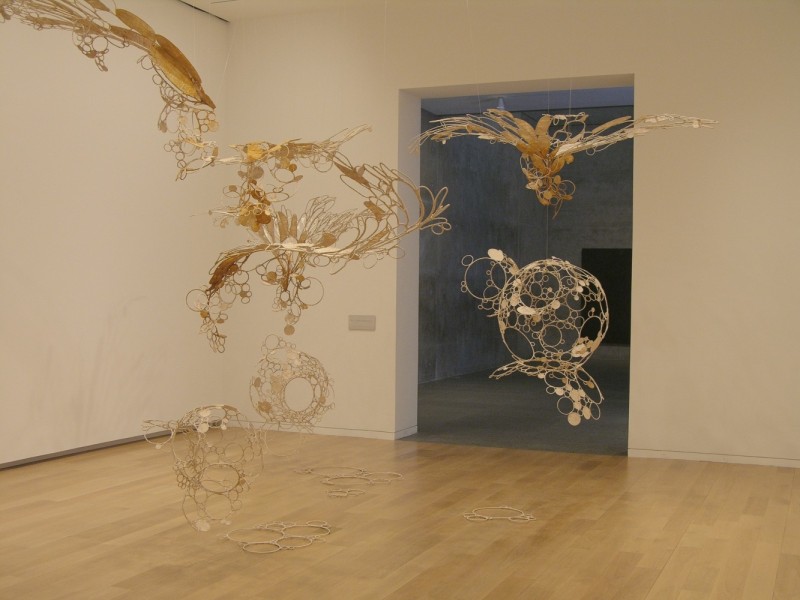
Artists continue to investigate new media by reaching outside of traditional disciplines; categories that define an artist - as a sculptor, painter, textile artist, etc.- are becoming less relevant. Artists are freely moving between diverse media to form a new vocabulary for their artwork. Ranjani Shettar's sculptural installations have found this freedom, making use of varied craft techniques paired with natural and man-made materials to comment on the spiritual, cultural, and transitory nature of life. Stainless steel, cloth, beeswax, wood, and beads are among the media she uses to create large-scale installations and sculptures. After receiving an MFA in sculpture from Chitrakala Institute of Advanced Studies in Bangalore, she received a Charles Wallace Trust Fellowship for Residency at Gasworks in London in 2004 and participated in the International Artist-in-residence program at Artpace in San Antonio in 2006. Shettar also holds an extensive exhibition record that includes works shown at the Walker Arts Center in Minneapolis and the Fondation Cartier pour l'art Contemporain, Paris, bringing international recognition to her approach to materials.
In the installation, Me, no, not me, buy me, eat me, wear me, have me, me, no, not me, Shettar transforms the metal of discarded cars into a series of large woven sculptures, directly referencing the traditions of her native Indian culture and examining the relationship of these traditions to the forward movement of technology and economics. "In a developing economy, it is normal for an object to live several lives before it is completely discarded," Shettar explains. "For me, junked cars represent peak consumerism." In the suspended installation, Sun sneezers blow light bubbles, Shettar uses beeswax, tamarind kernel powder paste, muslin, and looped stain-less steel wire to explore the phenomenon of sneezing in bright sunlight. Her use of golden-colored cloth and abstract arrangement of shapes seeks to bring a weightless quality to the form. The intensive wrapping of the steel frames suggests an intimacy with the piece that would otherwise go unrecognized. Shettar's installations continue to vary in technique and media, yet each piece reflects an underlying formal aesthetic and similar use of the hand that brings these diverse works into cohesion.
The inclusion of Ranjani Shettar's work in major galleries and museums underscores the relevance of textiles to contemporary approaches to art. Shettar is among a growing number of artists who have found that textiles and related techniques open a new realm of possibilities for engaging in a discourse that involves the history, process, and intimacy textiles are able to communicate.
-Lesli Robertson